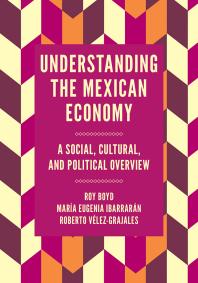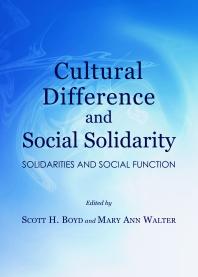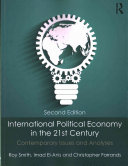Understanding the Mexican Economy A Social Cultural and Political Overview 1st Edition by Roy Boyd, Maria Eugenia Ibarraran, Roberto Velez Grajales 17876906529781787690653
$50.00 Original price was: $50.00.$25.00Current price is: $25.00.
Understanding the Mexican Economy A Social Cultural and Political Overview 1st Edition by Roy Boyd, Maria Eugenia Ibarraran, Roberto Velez Grajales – Ebook PDF Instant Download/Delivery: 1787690652, 9781787690653
Full download Understanding the Mexican Economy A Social Cultural and Political Overview 1st Edition after payment

Product details:
ISBN 10: 1787690652
ISBN 13: 9781787690653
Author: Roy Boyd; Maria Eugenia Ibarrarán; Roberto Vélez-Grajales
The Mexican economy is a contemporary political flashpoint, and not just in Mexico, but in the United States, as well. Yet few people understand it in its full complexity, and fewer still understand the social, cultural, and historical factors that have helped to make it what it is today and that will continue to affect its future. In Understanding the Mexican Economy, Roy Boyd, Maria Eugenia Ibarrarán, and Roberto Vélez-Grajales offer a comprehensive overview of these factors. They provide a full, historical, economic, and political context through which to understand the actions of the people and government of Mexico, and they give insights into how those actions impinge — and might continue to impinge — on the United States. They conduct a wide-ranging examination of the Mexican economy and investigate the causes of persistent problems such as economic stagnation, high poverty levels, and emigration abroad. Stressing the critical role played by economic incentives as well as Mexico’s geography and political institutions, they employ a number of modeling techniques, including a specially designed computer model, to discuss a variety of topics including international trade, regional inequality, the informal economy, natural resource extraction, Mexico’s “war on drugs,” and the economic impact of US trade and immigration policy on both Mexico and the US. For its comprehensive overview and the new insights it provides into these crucial and yet often tragically misunderstood issues, Understanding the Mexican Economy is essential reading not only for economists, but also for practitioners with a policy interest in Mexico, for students of Latin American studies, Development Studies, geography, and sociology, and for anyone with an interest in recent events and controversies around US-Mexican relations.
Understanding the Mexican Economy A Social Cultural and Political Overview 1st Table of contents:
Chapter 1 A Brief History and Geographical Overview of Mexico
1.1. History: Pre-Columbian Mexico
1.1.1. The Arrival of the Spanish and Colonial Mexico
1.1.2. Mexican Independence and Northern Wars
1.1.3. Reform and Revolution
1.1.4. Post-revolution Mexico and Recent History
1.2. Geography
References
Chapter 2 The Extraction of Natural Resources and Precious Metals
2.1. Introduction
2.2. Natural Resources in Colonial Times: The Age of Exploration and Exploitation
2.3. Natural Resources during Independence: A Time of Turbulence
2.4. Expansion of Natural Resource Sectors during the Porfiriato: Initial Investment
2.5. The Mexican Revolution: The Overthrow of Díaz and a Return to Turbulent Times
2.6. Effects of the Great Depression: Linkages between the US and Mexico
2.7. Cárdenas, Rising Nationalism, and the Nationalization of the Oil Sector
2.8. The Mexican Miracle, Protectionism, and the Oil Crisis
2.9. Recent History and Energy Reform
2.10. The Implications of Heavy Fossil Fuel Use on Carbon Usage and Climate Policy
References
Chapter 3 Shades and Colors: The Demographic and Cultural Landscape
3.1. Introduction
3.2. The Roots of Such Shades
3.3. Understanding Differences in Growth
3.4. Indigenous Communities
3.5. Key Factors in Regional Development
3.5.1. Education
3.5.2. Infrastructure
3.5.3. Trade
3.5.4. Pricing policies
3.6. Public Policy Alternatives and Regional Migration
References
Chapter 4 Long-term Dynamics of Well-being
4.1. Introduction
4.2. The Level of Physical Wellness in Mexico: 1850–1992
4.3. Human Development in Mexico: 1895–2010
4.4. Poverty in Mexico: 1950–2014
4.5. Income Inequality in Mexico: 1984–2014
4.6. Conclusion
References
Chapter 5 Social Mobility: The Result of Standing Inequalities
5.1. Introduction
5.2. Intergenerational Social Mobility in Mexico
5.3. Intergenerational Social Mobility at the State Level
5.4. Inequality of Opportunity: The Source of Low Social Mobility
5.5. Policy Implications
References
Chapter 6 An Economic Model of Mexico (and the US)
6.1. Introduction
6.2. The General Equilibrium Framework
6.3. Overall Structure of the Model
6.4. A Formal Presentation of the Model
6.4.1. Production
6.4.2. Labor and Consumption
6.4.3. Government
6.4.4. Trade
6.5. Modifications of the Model: Inclusion of Land as an Input
6.6. Adjustments to Make the Model Dynamic
6.7. The US Model
References
Chapter 7 Trade Policy: Liberalization and Protectionism
7.1. Introduction
7.2. Trade in Mexico Prior to NAFTA
7.3. The Economics of the North American Free Trade Agreement: Overall Impacts
7.3.1. Fulfilment of NAFTA’s Goals
7.3.2. Trade and Macroeconomic Shocks
7.4. The Effects of Trade Restrictions in Mexico
7.4.1. Simulation Results: Mexico
7.5. Effect of Trade Restrictions in the United States
7.5.1. Simulation Results: US
7.6. The Impact of Trade Liberation on Mexico
7.7. Conclusions
References
Chapter 8 Energy Reform and Climate Change Policy
8.1. Introduction
8.2. The Energy Reform of 2013
8.2.1. Electricity
8.2.2. Oil and Natural Gas
8.2.3. Reforms to the Oil and Natural Gas Sector
8.2.4. Arguments For and Against the New Reforms
8.3. Energy Reform Simulations
8.3.1. Discussion
8.3.2. Natural Gas Simulations
8.3.2.1. Electricity Reform Simulations
8.3.3. Carbon Tax Simulation
8.3.3.1. Simulation Results: Redistribution According to Labor Income
8.3.4. Simulation Results: Redistribution According to Capital Income
8.4. Climate Change Impacts and Abatement Policies
8.4.1. The Nature of Climate Change
8.4.2. The Climate Change Scenario
8.4.3. Climate Change Mitigation
8.5. Conclusion
References
Chapter 9 Economic Stagnation in Mexico and Immigration to the United States
9.1. Introduction
9.2. Informality in Mexico: Basic Characteristics
9.2.1. Productivity in the Informal Sector
9.2.2. Informality and Education
9.2.3. Informality and Taxation Policy
9.2.4. Informality and Subsidies
9.3. Our Model Incorporating Informality
9.4. Model Results: Business as Usual
9.4.1. Removing Payroll Contributions to Social Insurance
9.4.2. The Effects of Value Added Tax Increases
9.4.3. The Effects of Energy Subsidy Elimination
9.5. US Immigration: History
9.6. The Economic Effects of Immigration: Simple Labor Market Effects
9.6.1. Winners and Losers in a Multiple Market Framework
9.6.2. Immigration and Government Benefits
9.7. Calculating the Net Economic Benefits of Mexican Immigration
9.8. Conclusions and Policy Framework
References
Chapter 10 Institutional Weakness and the Spread of Drugs and Violence
10.1. Introduction
10.2. Historical Perspective of Drug Supply
10.2.1. Drug Trade Between Mexico and the US After World War II
10.3. The Economics of Drug Prohibition
10.4. The Structure and Working of Mexican Cartels: The Supply Side
10.5. Drug Consumption in the US and Mexico
10.5.1. Demand in the US
10.5.2. Demand in Mexico
10.6. Institutions and the Rule of Law in Mexico
10.6.1. The Weakening of the Mexican State
10.6.2. Mexico’s “War on Drugs”
10.7. Concluding Remarks
People also search for Understanding the Mexican Economy A Social Cultural and Political Overview 1st:
7 interesting facts about mexico
what type of economy does mexico have
6 interesting facts about mexico
5 interesting facts about the mexican revolution
Tags:
Roy Boyd,Maria Eugenia Ibarraran, RobertoVelez Grajales,Understanding
You may also like…
Politics & Philosophy - Social Sciences
Politics & Philosophy - Others
The Gaza Strip The Political Economy of De development Sara Roy
Politics & Philosophy - Government & Politics
Uncategorized
Uncategorized
Cultural Difference and Social Solidarity Solidarities and Social Function 1st Edition Scott H. Boyd
Politics & Philosophy - Anthropology
Ancient Greece: A Political, Social, and Cultural History 4th Edition Sarah B. Pomeroy
Politics & Philosophy - International Relations
International Political Economy in the 21st Century Roy Smith
Uncategorized
Law and the Economy in a Young Democracy: India 1947 and Beyond 1st Edition Tirthankar Roy











